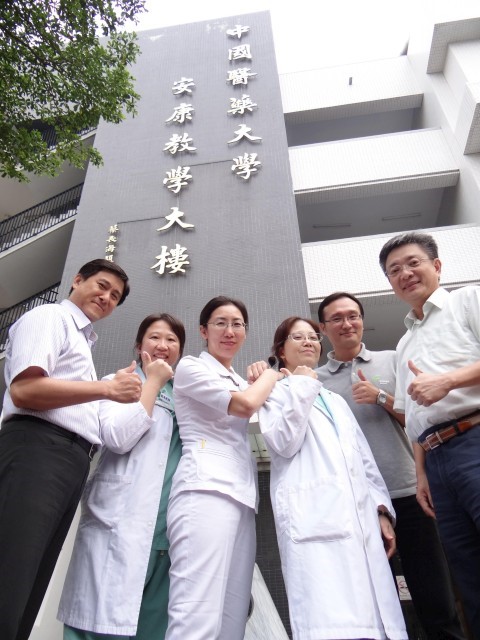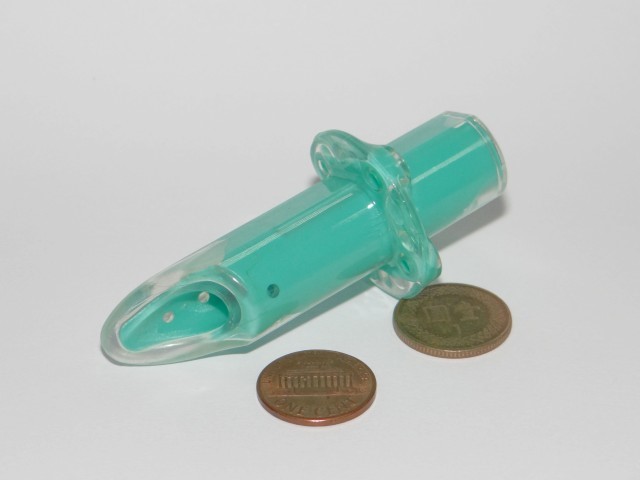Won the 13th National Innovation Award in the category of clinical innovation
Creativity comes from clinical care—CMUH was presented with the 13th National Innovation Award for its development of a bite block with a double-layer structure
%e9%a0%92%e7%8d%8e%e8%a1%a8%e6%8f%9a%e6%9c%ac%e9%99%a2%e8%ad%b7%e7%90%86%e9%83%a8%e6%9a%a8%e7%94%9f%e9%86%ab%e5%b7%a5%e7%a8%8b%e7%a0%94%e7%99%bc%e4%b8%ad%e5%bf%83%e5%9c%98%e9%9a%8a.jpg)
The bite block with a double-layer structure developed jointly by CMUH’s Nursing Department and Research and Development Center for Biotechnology can significantly limit the incidence of oral mucosa pressure sores in severe patients and improve the effectiveness of clinical nursing, thus winning the 13th National Innovation Award.
The National Innovation Award ceremony was hosted by the Institute for Biotechnology and Medicine Industry (IBMI). The judges said that the bite block with a double-layer structure developed by CMUH had a special design and could improve the deficiencies in the products on the market and meet the needs of medical care. And it deserves encouragement for its acquisition of a patent from Taiwan and China
Award-winning CMUH team members

CMUH team members receiving the 13th National Innovation Award includes Yi-na Wu (Respiratory Care Center Head Nurse), Huei-mei Chang (Nursing Department Supervisor), Ya-yen Liang (Respiratory Care Center Nurse), Jin-chern Chiou (former director of the Research and Development Center for Biotechnology), Shih-che Lo (Chief R&D Engineer of the Research and Development Center for Biotechnology), and Yong-jun Lin (former senior R&D engineer of the Research and Development Center for Biotechnology)
The new-type bite block was developed for the sake of patients

The Nursing Department said that in order to prevent patients with tracheal intubation from the risk of hypoxia caused by autonomic or involuntary tube biting, the patients must often use a bite block. However, as the conventional bite block has a sharp Y-structure and hard texture, long-term use is prone to oral pressure ulcers, causing the patient pain and restlessness and even leading to adverse chain reactions such as endotracheal detachment and increasing difficulty in oral care. In addition, oral pressure sores can cause bacterial proliferation, increase infection probability, and trigger the risk of sepsis or multiple organ failure.
The incidence of oral pressure ulcers in the patients is significantly reduced
Respiratory Care Center Head Nurse Yi-na Wu said that every time when she saw a critically ill patient’s mouth full of blood after using a hard, sharp bite block, and it really hurt. To this end, they consulted the school's Research and Development Center for Biotechnology, and after discussion, jointly worked out a solution. They utilized the technical advantages of medical equipment manufacturers to produce finished products and sterilization packaging. More than two years of clinical trials showed that patients using a double-structure bite block can reduce the incidence of oral pressure ulcers to 1/3 of that on conventional bite blocks, with obvious improvement effects.
Chief R&D Engineer of the Research and Development Center for Biotechnology Shih-che Lo said that the double-structure bite block similar to a pacifier in appearance is covered with a soft, transparent material on the external surface, which not only can protect the patient's teeth, tongue, and oral mucosa, but is convenient for the medical staff to observe the lip color change. One the other hand, its inner layer made of hard material also offers a safe design for the tolerance of the bite.
Meeting medical needs will be able to be used in clinical cases
He said that the successful development of this new product that is beneficial to patients is attributed to the full communication between the clinical units and the engineering units. Through brainstorming to solve problems, the engineers introduced R&D and production-related considerations before the product was successfully manufactured and clinical trials carried out, which exemplified the perfect collaboration between the two sides. As the double-structure bite block meets medical needs, some domestic firms have already approached the team about technology transfer matters and it is expected to be applied to clinical use soon and benefit patients.
By Director Ivan Wu China Medical University Center for Public Relations
